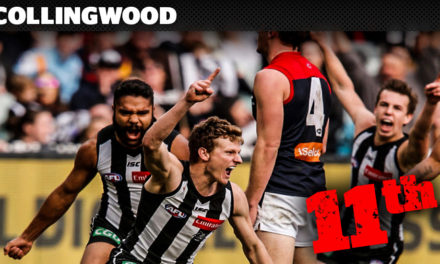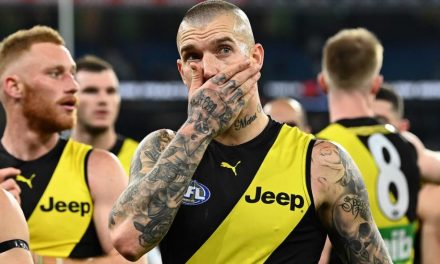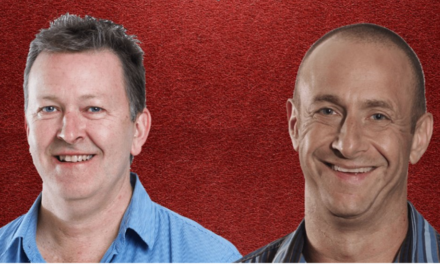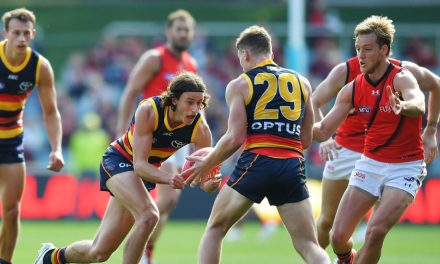The Giants line-up for the national anthem before last week’s qualifying final against Sydney. Photo: AFL MEDIA
If you follow AFL football in Sydney, you’re following a team which can often fight and win against the odds and has been putting itself in contention with regular finals appearances for a long time now.
But exactly which team are you talking about?
That’s not just a punchline, it’s reality. Because while the Swans have done it for decades, Greater Western Sydney is once again this September stamping its credentials as a consistently successful AFL club which, to be frank, deserves a lot more attention and kudos than it gets.
As the Giants prepare for their first home final since just over five years ago in 2019, that lack of fawning won’t surprise anyone who does follow or is associated with a club now in its 13th season.
But that familiarity with having to do their best work off Broadway, in unfavourable timeslots and at all manner of lower-key venues, has almost perversely helped create a sustainable and rock-solid culture.
It’s a long way from some of the in-hindsight crazy predictions of domination of the competition by GWS when it first entered the AFL competition in 2012. But having taken the hard road has helped make the Giants in 2024 somehow seem a lot more genuine a football club than they might have been had instant riches and support been their story.
In a non-traditional football state, without the more obvious geographic divide that exists between Brisbane and Gold Coast, and competing for market share and attention with a “big brother” which has now resided in its transplanted home for more than 40 years, it’s been no mean feat.
When the AFL released its final club membership tallies for 2024 on Wednesday, GWS was able to boast significant growth, its numbers rising from 33,036 last year to 36,629. That’s the numerical proof that this is a club getting bigger.
But it’s the eye test which is as important as the documented evidence, and anyone watching last week’s qualifying final at the SCG couldn’t have helped but notice the significant sections of support for the Giants throughout the crowd of more than 43,000.
Indeed, when veteran Callan Ward checksided the snap which put the Giants 13 points clear with under 10 minutes remaining last Saturday, the explosion of orange behind the Noble Stand end was unmistakable and the roar considerable.
Every club has hardcore supporters, but it does feel now like GWS has a decent enough share of them to at least hold its own in the barracking stakes, even those away games against the bigger, traditional clubs not an embarrassing exercise in total silence when the Giants kick a goal.
Perhaps all those years of having to contend with those silences, and the relative lack of exposure via more traditional media means really has turned quiet admiration into more fervent support, particularly among younger fans, while the Giants’ status as the AFL’s undisputed kings of social media content must also be a middle finger of sorts to the traditional media.
PLEASE HELP US CONTINUE TO THRIVE BY BECOMING AN OFFICIAL FOOTYOLOGY PATRON. JUST CLICK THIS LINK.
Whatever, it works. If you were a younger fan who hasn’t been by birth dragged into supporting another club, why wouldn’t the Giants appeal?
And even if you were older, it’s pretty hard not to admire a playing group and a coach in Adam Kingsley rapidly forging a reputation as one of the very best in the caper, given the way they continually punch above their weight.
As the Giants made a signature of last year, “anytime, anywhere” is their de facto motto, both in 2023 and again this year having 24 games to date spread around 12 different venues taking in not only Sydney, Melbourne, Adelaide, Perth and Brisbane, but Canberra, Geelong, Launceston, Ballarat and Mount Barker.
They’re also the very definition of team under Kingsley. Sure, there’s a superstar in Toby Greene and now a Coleman medallist in Jesse Hogan, proven AFL players like Lachie Whitfield, Josh Kelly and Tom Green.
But the Giants get maximum output from all parts of the 23 each week, whether it’s a 300-gamer like Ward or an exciting debutant like Darcy Jones.
If you need proof, check out Champion Data’s “Premiership Standards” report, on which GWS ranks top six in just four of 32 statistical categories. Saturday night’s opponent Brisbane, in comparison, is ranked top six in 28 of those 32 categories.
The Lions ranked fifth for points scored and second for fewest points conceded this season, the Giants only seventh and ninth respectively. But it was GWS which finished with the double chance, Brisbane now attempting to win a flag the hardest way via four wins in four weeks with three games on the road.
Ironically, if the Lions need a dose of inspiration, they can look back no further than their opponent’s performance last September, when the Giants beat St Kilda on the MCG, Port Adelaide on its Adelaide Oval home deck, then back at the G pushed eventual premier Collingwood to within one point in front of a crowd of nearly 98,000, the vast bulk of whom were cheering for the home team.
Nothing fazes the Giants. It hasn’t now for much of the past decade in which they have been a more regular finals face than any team bar Geelong (eight finals appearances between 2016-24), only the Swans matching their seven finals campaigns of the last nine.
And now, finally, after just three home finals of the 17 they’ve played in total, GWS gets to host an interstate team in its own backyard. For once, it’s the Giants who’ll have the advantage of familiarity and a majority of support on a big occasion.
And far from being the supposed AFL golden child that was often alleged in the early years, no one now could possibly claim the Giants haven’t earned it.
This article first appeared at ESPN.











